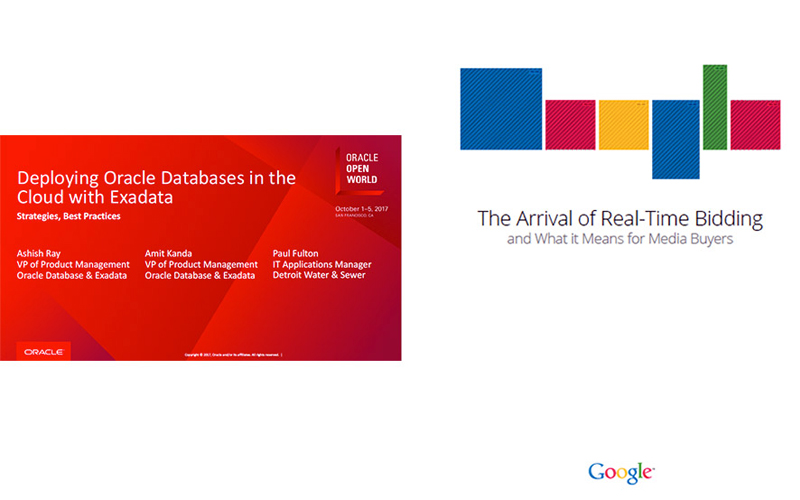White papers are crucial in marketing, allowing businesses to showcase their expertise and establish their authority as industry leaders. A white paper is a detailed and informative document that addresses a particular issue or problem and provides a solution supported by research and statistics. It is typically used to educate potential customers or clients about a specific product or service and is critical to any successful marketing strategy.
Learn what is a white paper in marketing and leverage its power to showcase your business’s knowledge and establish industry leadership. In this writing, we will explore what a white paper is, why it is important, its types, how to create an effective white paper, and frequently asked questions about it in marketing.
Table of Contents
ToggleWhat is a White Paper in Marketing?
A white paper is a persuasive, research-based document that focuses on a specific issue or problem and offers a solution or solution options. It is typically used as a marketing tool to educate and persuade potential customers or clients about a product or service.
In addition to what is a white paper in marketing, white papers are often used in industries with complex solutions or services like technology, healthcare, finance, and government. They are designed to educate readers about a problem or issue and provide a solution supported by research, statistics, and case studies.
White papers are usually longer and more in-depth than other marketing materials, such as brochures or case studies. Depending on the topic and the research required, they can range from several pages to hundreds of pages. Discover more about what is a white paper in marketing and utilize its power to educate and persuade your target audience effectively.
Why are White Papers Important in Marketing?

In addition of what is a white paper in marketing, white papers are an important marketing tool because,
- White papers establish a business as a thought leader and expert in their industry.
- They provide valuable information and insight to potential customers.
- They help prospective consumers make informed decisions.
- White papers can generate leads and nurture them.
- They build trust with potential customers by providing them with valuable information and insights.
- White papers can help businesses establish credibility with industry experts and influencers.
- They allow businesses to demonstrate their reliability and authority in the industry.
Types of White Paper in Marketing


Within the marketing realm, it’s essential to explore the various varieties of white papers to understand what is a white paper in marketing and its diverse applications. Each type serves a distinct purpose and adopts a specific white paper format, allowing businesses to communicate their expertise and solutions to their target audience effectively.
Problem and Solution White Papers


This white paper focuses on a specific problem the target audience faces and offers a solution supported by research and statistics.
Example: This type of white paper example include, “5 Strategies for Improving Employee Retention”
Backgrounder White Papers
This white paper provides background information on a particular issue or technology and explains its significance and relevance to the target audience within the realm of what is a white paper in marketing.
Example: “Understanding the Basics of Cloud Computing”
Numbered List White Papers
This white paper presents information in a list format, often with headings and subheadings, making it easy to scan and digest.
Example: “10 Tips for Effective Content Marketing”
Expert Guide White Papers
An expert in particular field authors this white paper, offering in-depth analysis and valuable insights on a specific topic within the realm of what is a white paper in marketing.
Example: “The Ultimate Guide to Social Media Advertising”
Technical White Papers


In addition to learning what is a white paper in marketing, this paper targets a technical audience and provides detailed information on a specific technology or product.
Example: “A Technical Guide to Implementing Artificial Intelligence in Your Business”
Executive Briefing White Papers
This white paper is designed for busy executives and summarizes a particular issue or problem and a recommended solution.
Example: “Why Diversity and Inclusion Should Be a Top Priority for Your Company”
Hybrid White Papers
This type of white paper combines elements of different white papers to provide a comprehensive solution or analysis of a particular issue or problem within the scope of what is a white paper in marketing.
Example: “How to Build a Successful Content Marketing Strategy: A Comprehensive Guide”
The type of white paper a business chooses to create will depend on its goals, target audience, and the specific issue or problem it aims to address. By understanding the different types of white papers available, businesses can choose the most effective format to reach and engage their target audience.
How to Create an Effective White Paper?


To harness the power of what is a white paper in marketing and create a compelling document, meticulous planning, thorough research, and skilled writing are essential. Follow these steps to craft a successful white paper that engages and influences your target audience.
Steps to Create a Successful White Paper
- Define the Problem or Issue: Defining the problem or issue is crucial in creating a successful white paper. It involves identifying a specific challenge or opportunity that the target audience faces and clearly articulating it in a way that resonates with the reader.
Here are some essential factors to take into account when formulating the problem or issue in a white paper:
Identify the Pain Point:
- What is the specific problem or challenge that the target audience is facing?
- What pain points are they experiencing due to this problem or challenge?
Example: “In the context of what is a white paper in marketing, an example of identifying a pain point is the common struggle many businesses face in retaining top talent, which leads to high turnover rates, low employee morale, and decreased productivity.”
Quantify the Problem:
- What is the scope and impact of the problem?
- What are the consequences of not addressing the problem?
Example: “The Society for Human Resource Management estimates that it takes six to nine months of an employee’s compensation to replace them. This might cost as much as $11.25 million annually for a company with 500 workers at the industry standard wage of $50,000 per person.”
Provide Supporting Research:
- What data, research, or statistics support the existence and severity of the problem?
- How can this information be presented compellingly and persuasively?
Example: ” In marketing, a white paper exploring what is a white paper in marketing could include insightful data from the Work Institute’s report. The report reveals that employees often leave their jobs due to various reasons, including a lack of career development opportunities (22%), work-life balance (12%), and compensation and benefits (11%). Understanding these factors can help businesses develop effective strategies to address them and improve employee retention.”
Establish Relevance to the Target Audience:
- Why is this problem or issue relevant and important to the target audience?
- What are the potential benefits of addressing the problem or issue?
Example: “As a business owner, you should focus on employee retention because it can have a big impact on your company’s productivity, morale, and cost of hiring and training new staff.”
By defining the problem or issue clearly and effectively, a white paper can capture the reader’s attention and establish the business as a thought leader and expert in the industry. This can build credibility and trust with potential customers or clients, leading to increased lead generation and business success.
- Conduct Research:
Conducting research is a critical step in creating a successful white paper. It involves gathering information and insights from various sources to support the problem statement and solution presented in the white paper.
Following are some essential factors to consider when conducting research for a white paper.
Identify Reliable Sources:
- What sources of information and data are credible and reliable?
- How can you ensure that the sources you use are reputable?
Example: “Sources such as academic journals, industry publications, and government reports are generally considered to be reliable sources of information.”
Gather Quantitative and Qualitative Data:
- What data and statistics can support the problem statement and solution presented in the white paper?
- What qualitative insights can provide a deeper understanding of the problem and potential solutions?
Example: “Quantitative data could include statistics on employee turnover rates or the cost of replacing employees. Qualitative insights could include feedback from employees on what they value most in the workplace.”
Analyze and Synthesize the Data:
- How can the data be analyzed and synthesized to support the problem statement and solution?
- What key insights can be drawn from the data?
Example: “Analyzing employee feedback could reveal common themes around what motivates and engages employees, which can inform the solution presented in the white paper.”
Incorporate Expert Insights:
- What insights and perspectives can experts in the industry provide?
- How can these insights be incorporated into the white paper to support the problem statement and solution?
Example: “In the context of what is a white paper in marketing, incorporating expert insights from HR professionals or consultants can provide valuable perspectives on employee retention strategies and best practices.”
By conducting thorough research supported by credible sources, quantitative and qualitative data, and expert insights, a white paper can provide valuable and actionable insights for the target audience. This can build credibility and trust with potential customers or clients and position the business as a thought leader and expert in their industry.
- Develop the Solution:
Developing the solution is the next step in creating a white paper. Once the problem or issue has been clearly defined, it’s time to present a solution supported by research and expert insights.
When creating the solution for a white paper, keep the following factors in mind:
Identify Potential Solutions:
- What are the potential solutions to the problem or issue?
- What’s good and bad about each solution?
Example: “To address employee retention, businesses can implement strategies such as increasing employee engagement and satisfaction, providing career development opportunities, and improving compensation and benefits packages.”
Support the Solution with Research:
- What research, data, or statistics support the effectiveness of the solution?
- How can this information be presented compellingly and persuasively?
Example: “In the context of what is a white paper in marketing, according to a Gallup study, businesses with high employee engagement levels outperform those with low levels in terms of profitability and productivity by 21% and 17%, respectively.”
Provide a Detailed Implementation Plan:
- How can the solution be implemented practically?
- What actions must be made to guarantee success?
Example: “To increase employee engagement, businesses can implement regular employee feedback surveys, provide training and development opportunities, and establish a clear career path for employees.”
Address Potential Obstacles and Objections:
- What potential obstacles or objections arise when implementing the solution?
- How can these be addressed and overcome?
Example: “In the realm of what is a white paper in marketing, one potential obstacle to improving compensation and benefits packages is budget constraints. However, businesses can explore creative solutions such as offering non-monetary incentives or reallocating funds from other areas.”
A white paper can provide real value to the target audience and position the business as a thought leader and problem solver by developing a practical solution supported by research and expert insights and addressing potential obstacles and objections. Credibility and trust can be developed with potential clients and customers, increasing lead generation and business success.
- Write the White Paper:
Furthermore, in the discussion of what is a white paper in marketing? Now we will discuss how to write the white paper. Once the research has been conducted and the solution has been developed, it’s time to write the white paper.
Here are some essential factors to take into account when writing a white paper:
Establish Credibility and Expertise:
- Begin by establishing the credibility and expertise of the business or individual presenting the white paper.
- Provide a brief background and overview of the problem or issue being addressed.
Example: “In the context of what is a white paper in marketing, as a leading provider of HR solutions, XYZ Company has extensive experience working with businesses to address employee retention challenges. This white paper examines employee turnover and offers practical solutions based on our research and experience.”
Present the Problem and Solution:
- Present the problem or issue and the proposed solution.
- Data, statistics, and expert insights support the problem and solution.
Example: “In the realm of what is a white paper in marketing, employee turnover is a significant challenge for many businesses, with costs ranging from 50-200% of an employee’s salary. To address this issue, we propose a comprehensive employee engagement and retention strategy that includes regular employee feedback surveys, career development opportunities, and competitive compensation and benefits packages.”
Provide a Detailed Implementation Plan:
- Outline a detailed plan for implementing the proposed solution.
- Provide practical and actionable steps for the target audience to follow.
Example: “In the context of what is a white paper in marketing, to implement our employee engagement and retention strategy, we recommend businesses start by conducting an initial employee feedback survey to identify areas for improvement. From there, they can develop a clear career path for employees and explore creative solutions for improving compensation and benefits packages.”
Address Potential Objections:
- Address potential objections or obstacles to implementing the proposed solution.
- Provide solutions or workarounds for these objections.
Example: “In the context of what is a white paper in marketing, we understand that budget constraints can be a major obstacle to improving compensation and benefits packages. However, businesses can explore alternative solutions such as offering non-monetary incentives or reallocating funds from other areas.”
Conclusion and Call-to-Action:
- Summarize the white paper’s key points and reiterate the proposed solution’s benefits.
- Provide a clear call-to-action for the target audience.
Example: “In conclusion, employee retention is a critical issue facing businesses today. By implementing a comprehensive employee engagement and retention strategy, businesses can not only reduce turnover costs but also improve productivity, profitability, and overall employee satisfaction. We encourage businesses to take action today and implement our proven solutions to see real results.”
By following these essential elements and creating a well-written and compelling white paper, businesses can leverage the power of what is a white paper in marketing to position themselves as thought leaders and experts, build credibility and trust with potential customers or clients, and ultimately drive lead generation and business success.
- Design and Layout:
After the content of the white paper has been written, it’s time to focus on the design and layout. A well-designed white paper can help attract and engage readers and make the content more visually appealing.
When creating and organizing a white paper, keep the following factors in mind:
Cover Page:
- Include a professional and eye-catching cover page that communicates the topic and purpose of the white paper.
- Use images, graphics, or branding elements to reinforce the business or individual presenting the white paper.
Example: In the context of what is a white paper in marketing, a white paper on “The Future of Renewable Energy” might feature an image of a wind turbine or solar panel on the cover page, along with the logo of the renewable energy company presenting the white paper.
Formatting:
- Use consistent and easy-to-read formatting throughout the white paper.
- Make the content skimmable by including headers, subheadings, and bullet points.
- To add visual appeal, use a typeface that is simple to read and think about experimenting with various font sizes and styles.
Example: Use a sans-serif font like Arial or Helvetica for the main body text, and consider using a larger or bolded font for headings and subheadings.
Graphics and Images:
- Use graphics, images, and charts to help illustrate key points and data.
- Use high-quality and relevant visuals that support the content of the white paper.
Example: Within the realm of what is a white paper in marketing, a white paper on “The Benefits of Meditation in the Workplace” might include a graph showing meditation’s positive impact on employee stress levels.
Call to Action:
- At the end of the white paper, inspire readers to act or learn more.
- Provide contact information or links to additional resources that the reader can access.
Example: A white paper on “The Future of E-commerce” might include a call to action that encourages the reader to schedule a consultation with the e-commerce company presenting the white paper.
Overall, the design and layout of a white paper should be professional, visually appealing, and support the content of the white paper.
- Promote the White Paper:
In the context of what is a white paper in marketing, promotion is a critical step in the white paper marketing process. Without promotion, the white paper will not reach its intended audience.
Here are some key elements to consider when promoting a white paper:
Identify the Target Audience:
- Identify the target audience for the white paper.
- Understand their needs, interests, and pain points to tailor the promotion strategy.
Example: A white paper marketing examples include a white paper on “The Future of Social Media Advertising” which might target marketing professionals in the e-commerce industry.
Choose Promotion Channels:
- Select appropriate promotion channels based on the target audience and business goals.
- Consider using a mix of digital and traditional marketing channels.
Example: In the realm of what is a white paper in marketing, a common practice is to promote the white paper on various platforms such as social media, email newsletters, relevant blogs or industry publications, and through targeted advertisements.
Use Multiple Formats:
- Consider creating multiple formats of the white paper to appeal to different audiences.
- Offer different formats like a PDF, infographic, or video.
Example: A white paper on “The Future of Artificial Intelligence” might also have an accompanying infographic and a video summary for audiences who prefer visual content.
Offer Gated Content:
- Use gated content to capture the contact information of interested readers.
- Offer a free download of the white paper in exchange for the reader’s contact information.
Example: In the context of what is a white paper in marketing, an example would be a white paper on “The Benefits of Account-Based Marketing” might require the reader to fill out a form with their name, email, and company information before accessing it.
Leverage Partnerships:
- Collaborate with partners or influencers to expand the reach of the white paper.
- Leverage the partner’s audience and social media channels to promote the white paper.
Example: Partnering with industry experts, associations, or trade publications to promote the white paper to their followers and subscribers.
Overall, a successful white paper promotion strategy necessitates a firm grasp of the target market and using the right channels to communicate effectively.
Learn more about what is a white paper in marketing and gain valuable insights through these examples.
- Sungard AS – “Four-Step Plan for Business Continuity”: Discover actionable insights for business continuity in Sungard AS’s white paper.
- Google Cloud – “Security and Compliance Whitepaper”: Explore Google Cloud’s comprehensive approach to security and compliance in their white paper.
- Column Five – “Presentation Design: Keeping Your Business Secure is Hard. Google Apps Can Help.”: Learn how effective presentation design and Google Apps can enhance business security in Column Five’s white paper.
- Uber Elevate – “Uber Elevate White Paper Oct 2016”: Explore Uber Elevate’s groundbreaking vision for urban air transportation in their white paper.
Conclusion
To conclude, a white paper is a powerful marketing tool crucial in establishing a business’s authority and thought leadership in a specific industry or field. In the essence of what is a white paper in marketing, it is an argumentative, research-based document that highlights a particular problem or topic and offers a solution backed by data and evidence.
By following the guidelines and best practices outlined in this writing, businesses can produce an exceptional white paper that provides their target audience with valuable information and insights, ultimately helping them generate leads, establish credibility, and foster trust with potential clients or customers. So, what is a white paper in marketing? It is a strategic document that is a powerful tool for businesses looking to make a significant impact in their industry and attract new customers or clients.
FAQs about White Papers in Marketing
A white paper in marketing is an authoritative and informative document that presents a problem and offers a solution, often used to educate and influence target audiences. It is a valuable business tool to establish thought leadership and generate leads. Learn more about what is a white paper in marketing and its significance in the above writing.
When it comes to what is a white paper in marketing, it is crucial that a white paper should be written by someone knowledgeable about the topic and can provide valuable insights and information. This could be someone within the company, such as a subject matter expert, external writer, or agency.
In a learning of what is a white paper in marketing, to make your white paper stand out, you should provide valuable insights and information unavailable elsewhere. You can also use visuals, such as charts and graphs, to help illustrate key points and make the information more engaging.
When writing a white paper, it’s important to avoid making the following mistakes:
1. Not defining the problem clearly.
2. Not providing enough supporting research and statistics.
3. Not presenting the solution clearly and concisely.
4. Not promoting the white paper effectively.
By avoiding these errors, your white paper can deliver valuable insights and establish credibility within the field of what is a white paper in marketing.
You can use a white paper to generate leads by offering it as a free download on your website or through other channels, such as social media and email marketing. Leveraging the capabilities of what is a white paper in marketing, you can also use the white paper to nurture leads by following up with additional information and resources.
When it comes to what is a white paper in marketing, it is important to note that white papers can vary in length but are typically longer than other marketing materials. A white paper can range from several pages to hundreds of pages, depending on the topic and the amount of research required.
A white paper in marketing, or more specifically, “what is a white paper in marketing,” is to provide an authoritative and informative document that addresses a problem, offers a solution, and establishes thought leadership. White papers are utilized to educate and influence target audiences while generating leads for businesses.
An example of a white paper in marketing, illustrating “what is a white paper in marketing,” could be a comprehensive guide that explores content marketing strategies for B2B businesses. This white paper will provide insights, industry trends, and practical tips to help enterprises to develop effective content marketing campaigns.
To write a white paper in marketing, understand “what is a white paper in marketing” and conduct thorough research. Define a problem, propose a solution, and structure it effectively. Incorporate data, case studies, and expert insights to support your claims. Keep it concise, use a professional tone, and promote it to your target audience.









